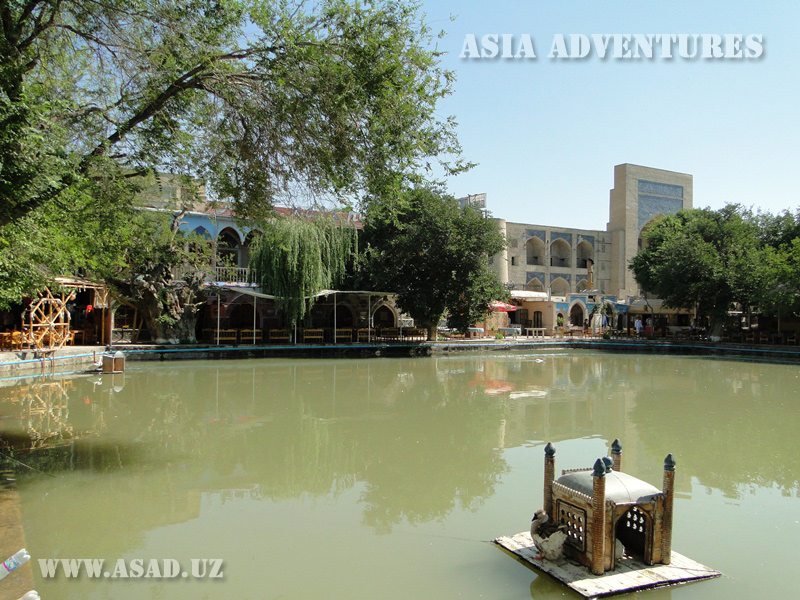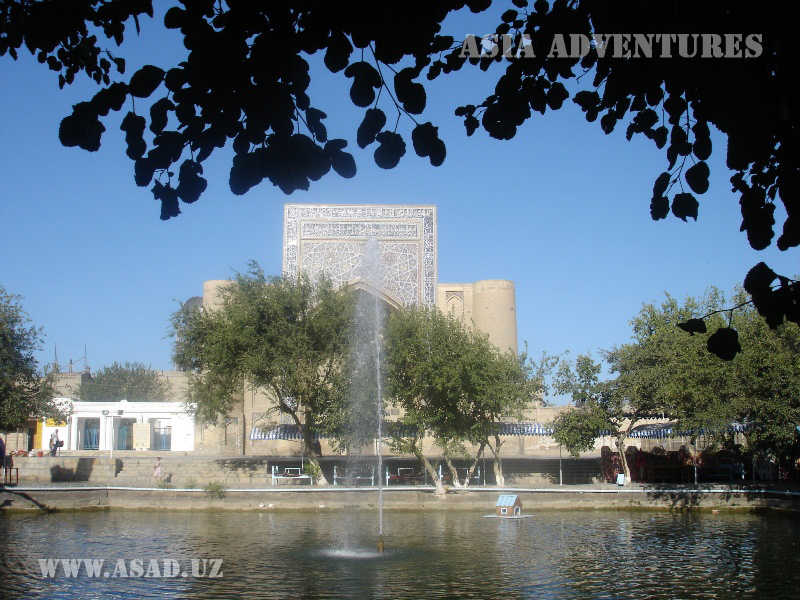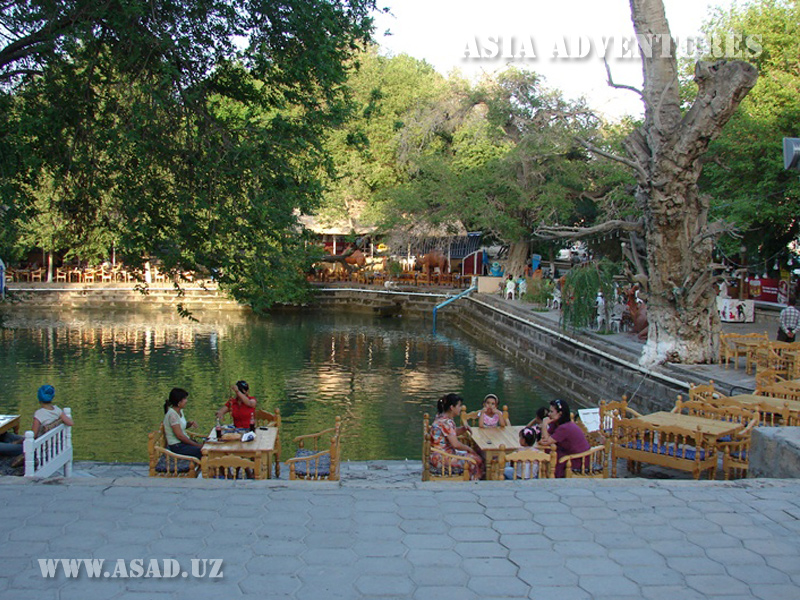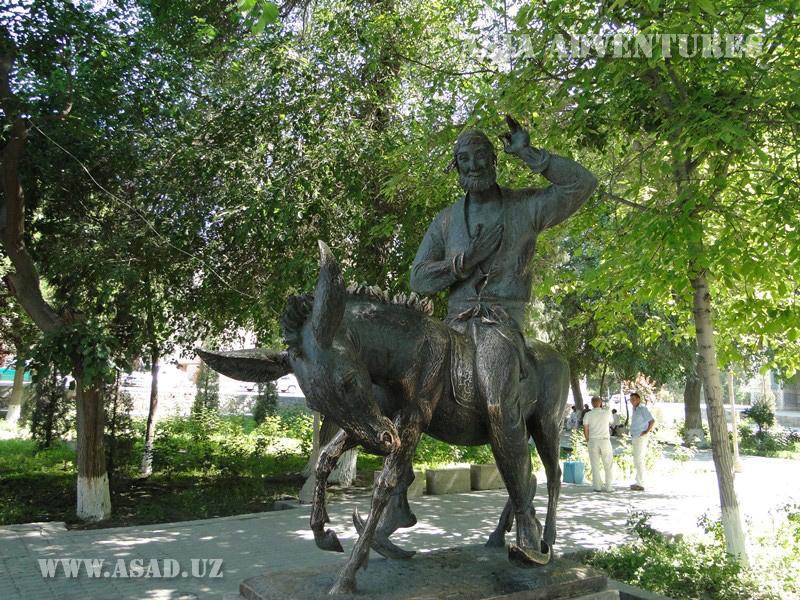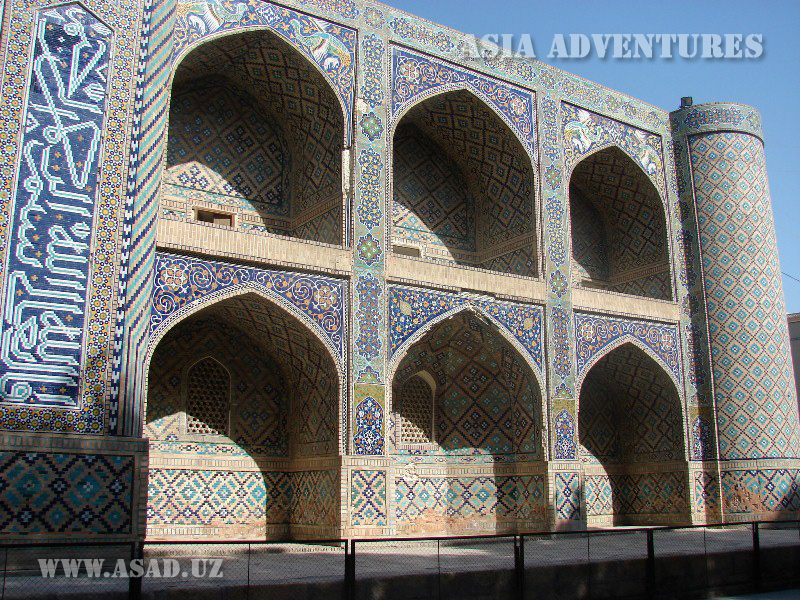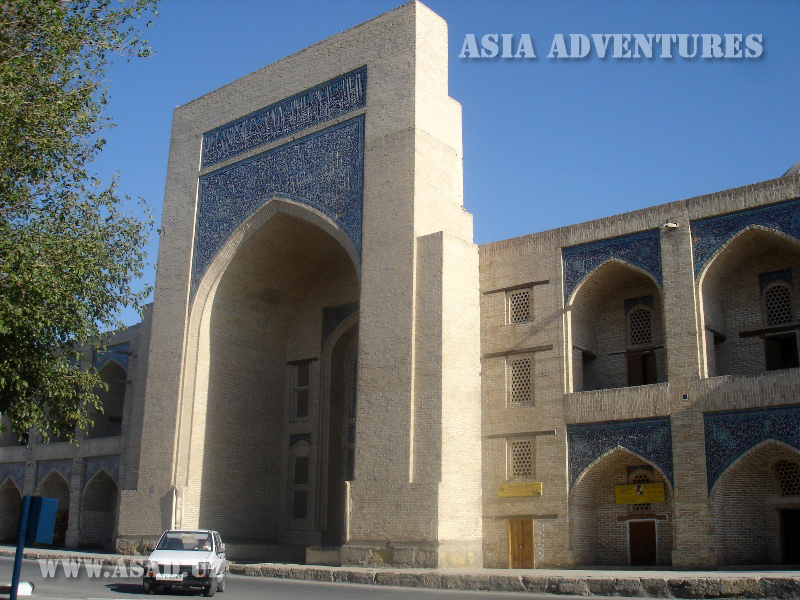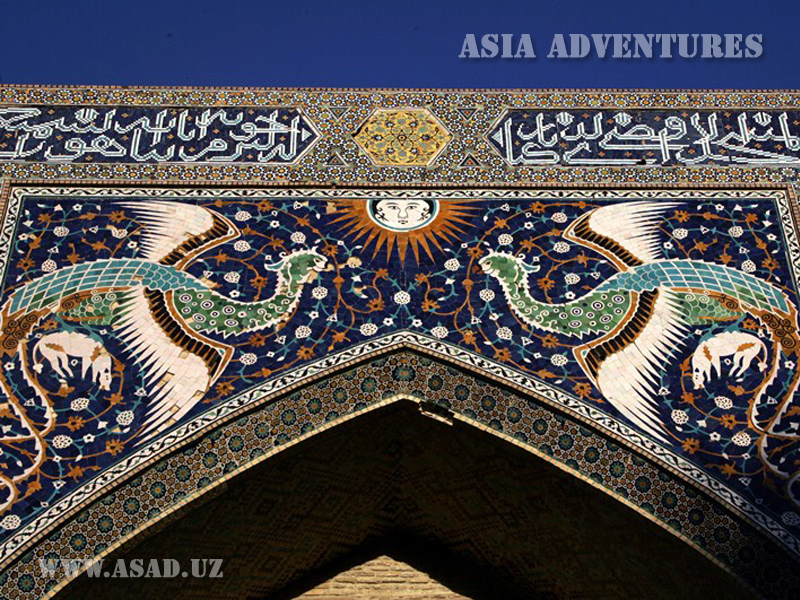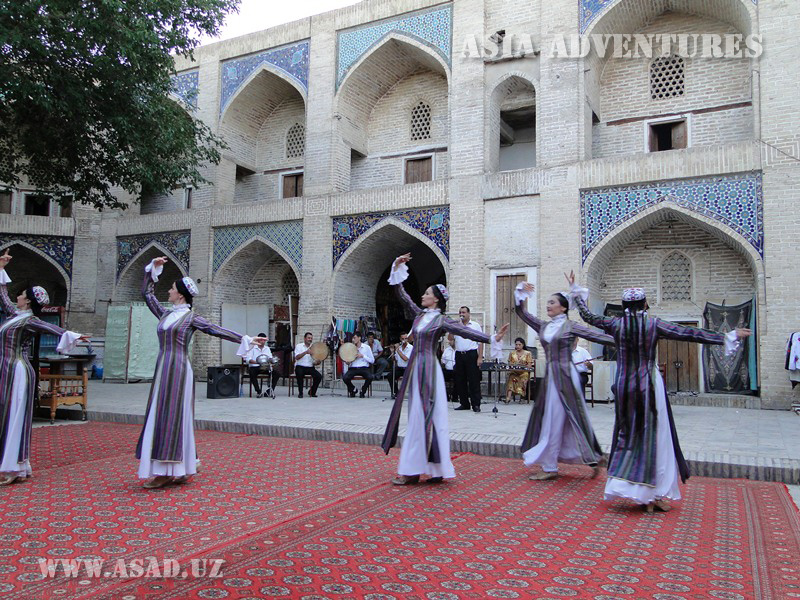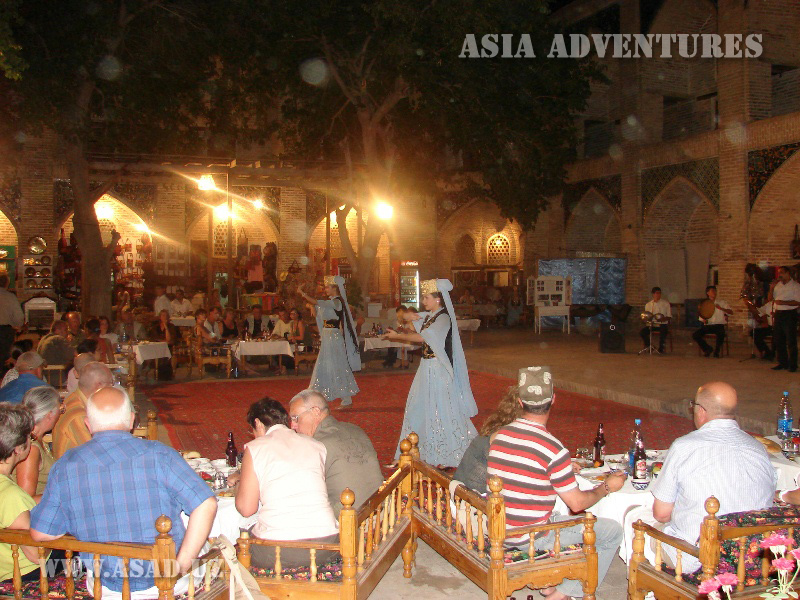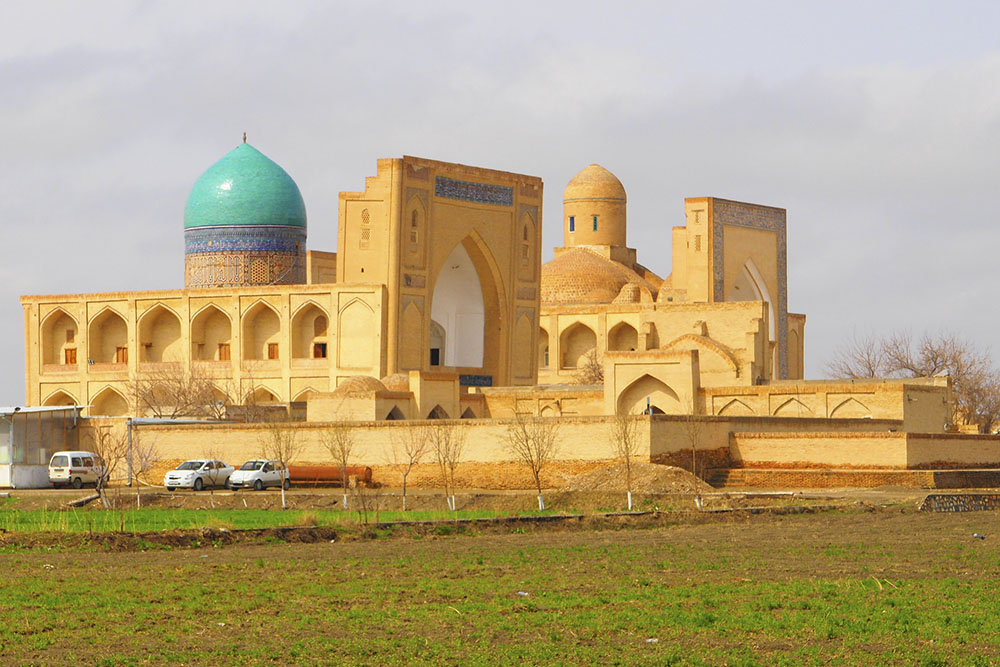Labi Hauz which is translated as ‘at the pond’ is one of the central squares of Bukhara situated in the southeast part of the city. The architectural ensemble was created in the 16th-17th centuries. The square has the form of an irregular polygon with the Divan-Begi madrasah in the eastern part. In the western part, opposite the madrasah, is the Divan-Begi khanqah. The khanqah is a small cruciform building with a domed hall in the centre and two storeys of khujras around it. The main façade is flanked with low towers and decorated with mosaics and interwoven ornaments running at its sides. The lateral facades consist of arched entrances and systems of smaller arches.
The central part of the square is occupied by a hauz (pool, pond), which is the largest and most ancient among the constructions of this type in the whole Central Asia. The reservoir is an octagonal pond, 42 m by 36 m and up to 5 m deep, with no drainage. The walls of the pool have the form of stone steps. The reservoir has a volume of 4,300 m3, water coming into it from a system of canals.
The whole of the northeast part is occupied by the large Kukeldash madrasah.
An original bronze statue of Hoja Nasreddin, a wit and a hero of folk stories, was erected among the trees near the Divan-Begi madrasah.
The estimated size of the Labi Hauz ensemble is 150 m by 200 m.
In the medieval period Labi Hauz was a busy trading place, which was conditioned by its nearness to the main trading street and by the high density of buildings in Bukhara, the latter factor making the square of Labi Hauz one of the few open spaces in the city.
The first Labi Hauz building that has been preserved to our days appeared in 1569, when Nodir Divan-Begi, a high official of Abdulla-khan II of the Sheybanid dynasty, ordered to build a madrasah, the largest in Central Asia. The Kukeldash madrasah is a rectangular construction, 86 m by 69 m in size, consisting of a mosque, darshona (lecture hall) and 160 khujras (rooms).
In 1623 that same official built a caravanserai which was later turned into the Divan-Begi madrasah. The façade of the building is skillfully decorated with a mosaic panel. Large mosaic birds on the madrasah’s entrance portal look particularly impressive.
Nowadays a popular folk show with national dances and demonstration of traditional costume created by fashion designers from Bukhara is often held in the court of the madrasah.




